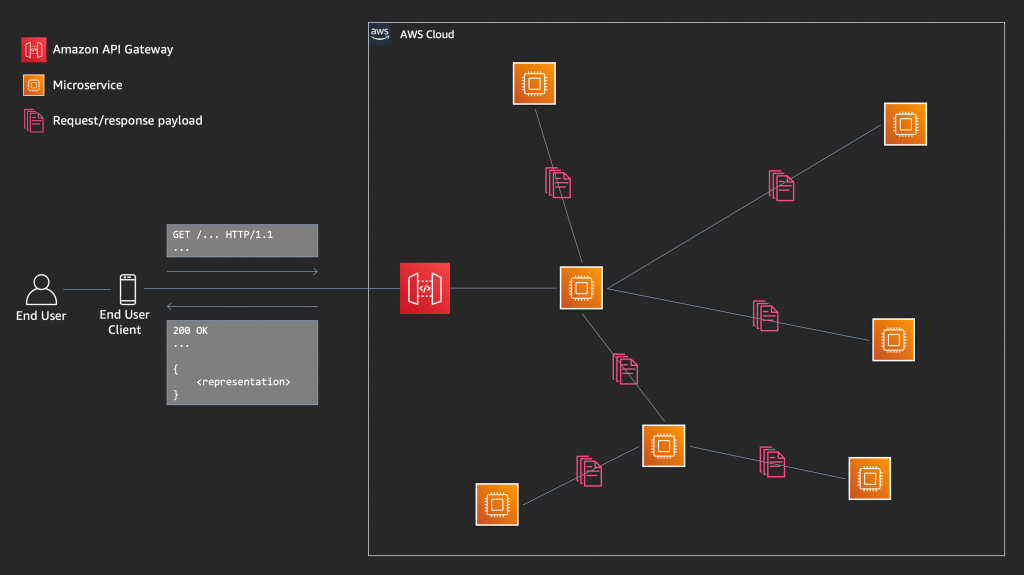AWS Compute Blog
Category: Messaging
New AWS Lambda controls for stream processing and asynchronous invocations
Today AWS Lambda is introducing new controls for asynchronous and stream processing invocations. These new features allow you to customize responses to Lambda function errors and build more resilient event-driven and stream-processing applications. Stream processing function invocations When processing data from event sources such as Amazon Kinesis Data Streams, and Amazon DynamoDB Streams, Lambda reads […]
Migrating from IBM MQ to Amazon MQ using a phased approach
This post is contributed by Mithun Mallick, Solutions Architect and Christian Mueller, Solutions Architect Message-oriented middleware (MOM), or message brokers, are the backbone that integrates business critical applications in many industries. MOMs are used to integrate systems like inventory management, payment systems, and CRM systems. They are also used to orchestrate order-processing workflows across multiple systems, […]
Application integration patterns for microservices: Fan-out strategies
This post is courtesy of Dirk Fröhner, Sr. Solutions Architect The first blog in this series introduced asynchronous messaging for building loosely coupled systems that can scale, operate, and evolve individually. It considered messaging as a communications model for microservices architectures. This post covers concrete architectural considerations, focusing on the messaging architecture. Part 3 covers running […]
Understanding asynchronous messaging for microservices
This post is courtesy of Dirk Fröhner, Sr. Solutions Architect One of the implications of applying the microservices architectural style is that much communication between components happens over the network. After all, your microservices landscape is a distributed system. To achieve the promises of microservices, such as being able to individually scale, operate, and evolve each service, this […]
New for AWS Lambda – SQS FIFO as an event source
AWS Lambda first announced support for Amazon SQS standard queues as an event source in April 2018. This allows builders to develop serverless applications using queues to directly invoke Lambda functions. Today, we have expanded this feature to include SQS FIFO queues. This makes it easier to create serverless applications using queues where the order […]
Designing durable serverless apps with DLQs for Amazon SNS, Amazon SQS, AWS Lambda
This post is courtesy of Otavio Ferreira, Sr Manager, SNS. In a postal system, a dead-letter office is a facility for processing undeliverable mail. In pub/sub messaging, a dead-letter queue (DLQ) is a queue to which messages published to a topic can be sent, in case those messages cannot be delivered to a subscribed endpoint. […]
Creating static custom domain endpoints with Amazon MQ to simplify broker modification and scaling
Update – Nov 9, 2021: AmazonMQ also supports RabbitMQ – read Creating static custom domain endpoints with Amazon MQ for RabbitMQ for more information This post is courtesy of Wallace Printz, Senior Solutions Architect, AWS, and Christian Mueller, Senior Solutions Architect, AWS. Many cloud-native application architectures take advantage of the point-to-point and publish-subscribe (“pub-sub”) model of message-based […]
Simple Two-way Messaging using the Amazon SQS Temporary Queue Client
This post is contributed by Robin Salkeld, Sr. Software Development Engineer Amazon SQS is a fully managed message queuing service that makes it easy to decouple and scale microservices, distributed systems, and serverless applications. Asynchronous workflows have always been the primary use case for SQS. Using queues ensures one component can keep running smoothly without losing […]
Configuring user creation workflows with AWS Step Functions and AWS Managed Microsoft AD logs
This post is contributed by Taka Matsumoto, Cloud Support Engineer AWS Directory Service lets you run Microsoft Active Directory as a managed service. Directory Service for Microsoft Active Directory, also referred to as AWS Managed Microsoft AD, is powered by Microsoft Windows Server 2012 R2. It manages users and makes it easy to integrate with compatible AWS services […]
Enriching Event-Driven Architectures with AWS Event Fork Pipelines
September 8, 2021: Amazon Elasticsearch Service has been renamed to Amazon OpenSearch Service. See details. This post is courtesy of Otavio Ferreira, Mgr, Amazon SNS, and James Hood, Sr. Software Dev Engineer Many customers are choosing to build event-driven applications in which subscriber services automatically perform work in response to events triggered by publisher services. This architectural pattern […]









